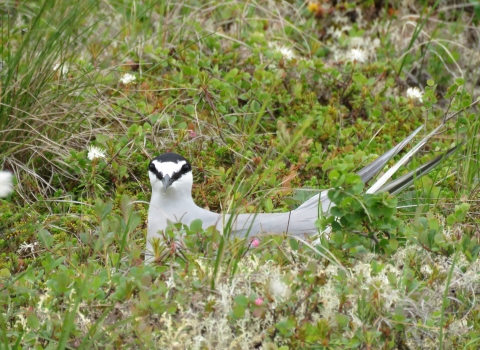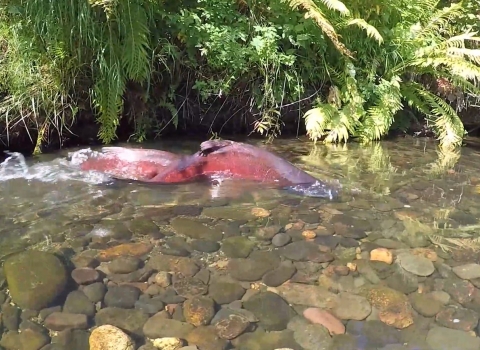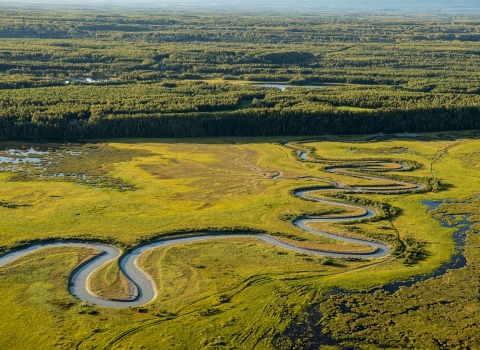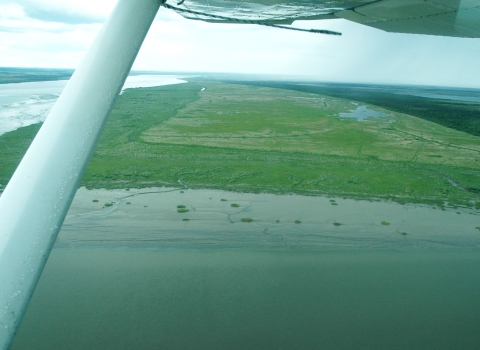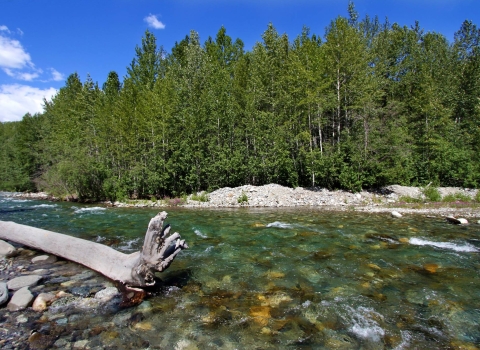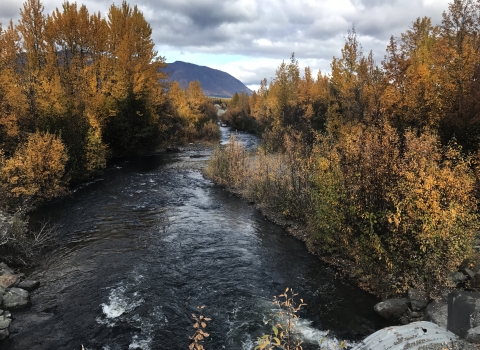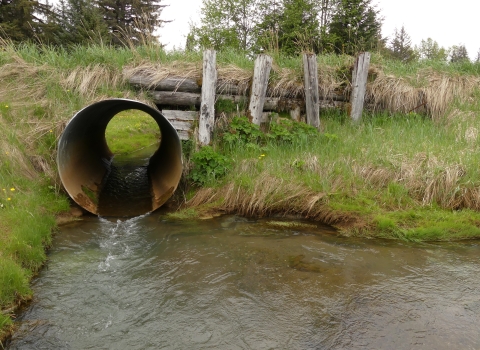Projects and Research
If you have spent time in the summer along the coastline of Alaska, chances are you’ve encountered a tern. Terns are graceful, pale grey seabirds that float between land and water, hovering and diving for small fish. Tern species in Alaska have long narrow wings, forked tails, and black caps.
Take a closer...
The Deshka River is a tributary of the Susitna River, located in Southcentral Alaska. It has a historically large chinook salmon run with long-term monitoring data available for salmon (since the 1970s). The study seeks to improve understanding about how changes in freshwater temperature effect salmon by meticulously studying one river system from headwaters to mouth. The statistical framework...
The mission of the Alaska Coastal Program is to conserve healthy coastal ecosystems for the benefit of fish, wildlife, and people. As a direct conservation assistance program, the Alaska Coastal Program invests funding, staff time, technical expertise, and other resources into coastal habitat conservation projects in partnership with non-governmental organizations, private landowners, local...
Virtual Youth Fish and Wildlife Club is a place where young people meet scientists, learn about careers in this field, and build an understanding and appreciation for fish, wildlife, and public lands.
Join Marye and guests every Wednesday to learn something new and connect with friends. LINKOur in-person Anchorage youth fishing program grew into this larger online community where...
History: We started a hands-on fishing program in 2011 to help Anchorage youth get hooked on one of Alaska's favorite activities: fishing! In talking and listening to youth, we found that lack of know-how and fear of wildlife, getting lost, and water (drowning, falling/getting pulled in) are major barriers to recruiting and retaining young anglers into fishing. Since then, we've grown the...
The mission of the Alaska Coastal Program is to conserve healthy coastal ecosystems for the benefit of fish, wildlife, and people. As a direct conservation assistance program, the Alaska Coastal Program invests funding, staff time, technical expertise, and other resources into coastal habitat conservation projects in partnership with non-governmental organizations, private landowners, local...
The mission of the Alaska Coastal Program is to conserve healthy coastal ecosystems for the benefit of fish, wildlife, and people. As a direct conservation assistance program, the Alaska Coastal Program invests funding, staff time, technical expertise, and other resources into coastal habitat conservation projects in partnership with non-governmental organizations, private landowners, local...
Temperature is one of the most important environmental factors controlling the distribution and behavior of fishes. Fish often inhabit a specific thermal niche where they optimize physiological performance. Although water temperature requirements and preferences vary according to individual species and life stage, of interest and relevance to us is continual engagement in field...
This project will remove an undersized, double barrel culvert on the Little Tonsina River in the Valdez-Cordova Borough. This project is currently the highest priority barrier removal project for the Service in Alaska because of the 70.4 miles of relatively pristine Coho and Chinook Salmon spawning and rearing habitat that lie above this barrier. These waters eventually meet...
Tyonek Creek is one of the largest and most important salmon streams near the village of Tyonek, Alaska. The project will replace an undersized culvert with a channel spanning bridge and restore access to 10.8 miles of Coho Salmon spawning and rearing habitat. The crossing lies 0.4 stream miles above where Tyonek Creek outlets to the ocean and is the lowermost barrier in the...
The U.S. Fish and Wildlife Service, City of Gustavus, Trout Unlimited, Alaska Sustainable Salmon Fund and National Fish and Wildlife Foundation have been working together for many years to restore aquatic connectivity and fish passage in Gustavus via a series of culvert-to-bridge and other fish passage projects. An undersized culvert on Harry Hall Creek at Grandpa's Farm Road...

